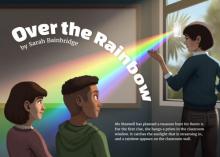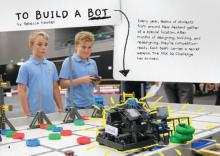Instructional Series
This site will be closing soon as its content has moved to Tāhūrangi.
2024 titles are available on Tāhūrangi. Use the filters to find specific series.
Find Literacy resources at Tāhūrangi - Literacy.
Welcome to the English medium literacy instructional series teaching and learning resources for years 1 to 8.

- Gold
- 2
- 4
- 3
- 3
- 4
- 7
- 8
- English
- Science
- Technology
- Social Sciences
- Mathematics and Statistics
- Non-fiction
- Fiction
- None
- Physical world
- Nature of science
- Geometry and Measurement
- Nature of technology
- Technological practice
- Critique evidence
- Interpret representations
- Articles
- Poems
- Stories
Search results
10 items - Showing 1 - 10
-

Solar Power in Tokelau
by Iona McNaughton
This report highlights the world-first achievement of Tokelau in using renewable energy sources (solar energy and coconut oil) for all its electricity. It explains why Tokelau decided to switch from using fossil fuels and includes comments from a Tokelau family that illustrate the impact of the change.
-

Lighting the Way with Solar Energy
by Andrew & Anna Dickson
When Tokelau decided to switch to renewable energy, they thought critically about all the options. They decided that solar energy was a cost-effective option suited to the sunny Tokelaun climate. Over four thousand solar panels were installed on Tokelau, making them the first country in the world to use 100 percent renewable energy. Now they hope to inspire others to make the switch.
-

Borrower
by Greg O'Connell
illustrated by Fraser Williamson
"I want to borrow the sun and cook a feast with its sparks. I want to borrow the wind and fly the skies with its force."
-

Power from the Sun
by Maggie Twaddle
This report describes the use of solar panels to make electricity and includes an example of a school that has been using solar power since 2008. Students from the school share what they have learnt about solar power, including the fact that solar power is a form of renewable energy.
-

Feedback
by Matt Boucher
This article is a follow up to “Climate Change: Our Biggest Challenge”. It explains the phenomenon of feedback loops – positive feedback loops, which can cause climate change to accelerate, or negative loops, which can lessen the factors that cause change.
-

Over the Rainbow
by Sarah Bainbridge
Ms Maxwell sends her class on a treasure hunt. The students must use their prior knowledge of the electromagnetic spectrum to find out how different types of energy can be used in their everyday lives.
-

Reducing our Footprint
by Sarah Connor
This is the final article in a series that explores climate change. The first explains what it is; the second explores the difficulties in making predictions about it; and this, the third, looks at the ways people have responded to the challenge of climate change. It profiles four different organisations or people: an e-bike company, food recyclers, a scientist who’s developed an app for the agricultural sector, and a hemp farmer.
-

To Build a Bot
This article describes the process undertaken by three students from Feilding’s Manchester Street School as they designed and built a robot that won the New Zealand VEX IQ Challenge. The article offers an authentic way of introducing students to programming and computational thinking, as well as physics and engineering concepts related to energy, weight, and balance.
-

As Easy as One, Two, Three
by Simon Cooke
illustrated by Dede Putra
After crash landing on an unfriendly planet, Tane and Mia must find an energy crystal to recharge their ship. Tane has found a crystal, but he’s stuck in security goo outside the Meruvian fortress. To rescue Tane, Mia must navigate her way through the most difficult defence maze in the universe! She has her guide-bot to help, but unfortunately, the guide-bot doesn’t have all the data necessary to find the quickest and safest route through the maze.
-

Dances of Sāmoa
by Toleafoa Avauli Peter Setefano
This article describes three well-known dance forms from Sāmoa. The article is accompanied by colourful, high-energy photos of students from a Porirua primary school performing the slap dance and the sāsā. The article features some of the history of the dances and it also provides opportunities for an in-depth exploration of the relationship between the heroes of the dances and the stories that each dance tells.







 Literacy Online home
Literacy Online home
